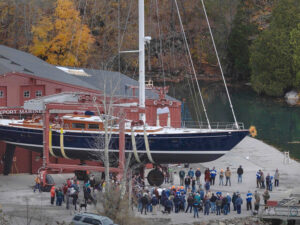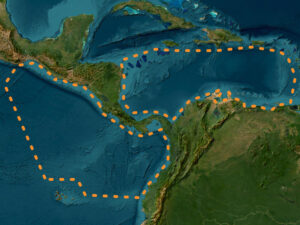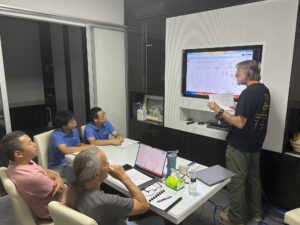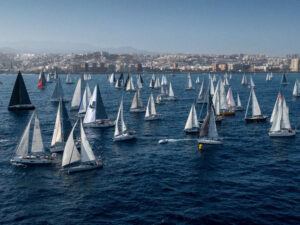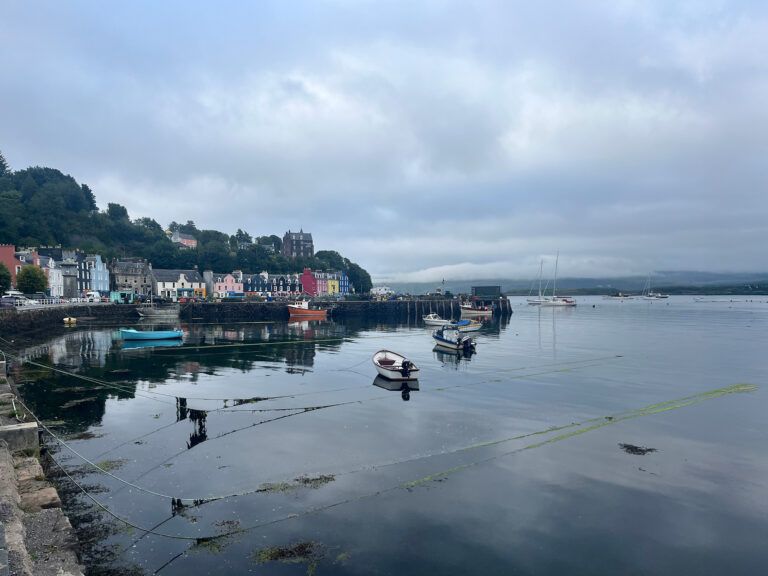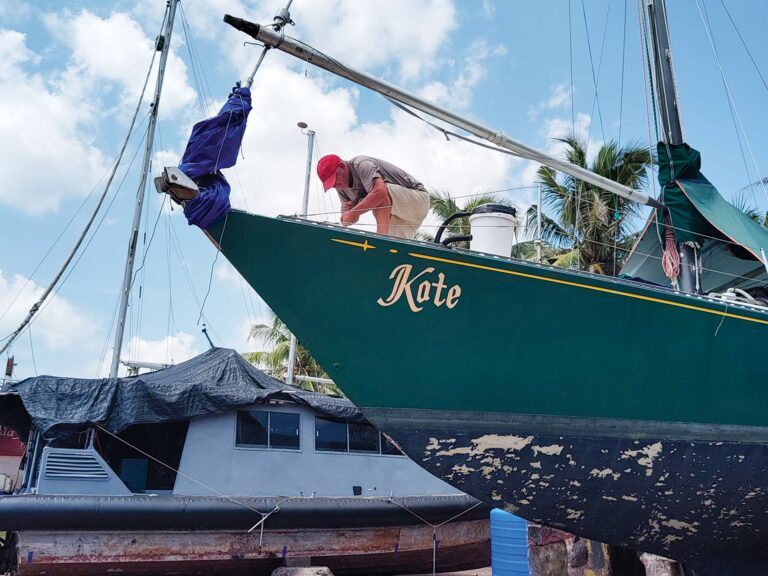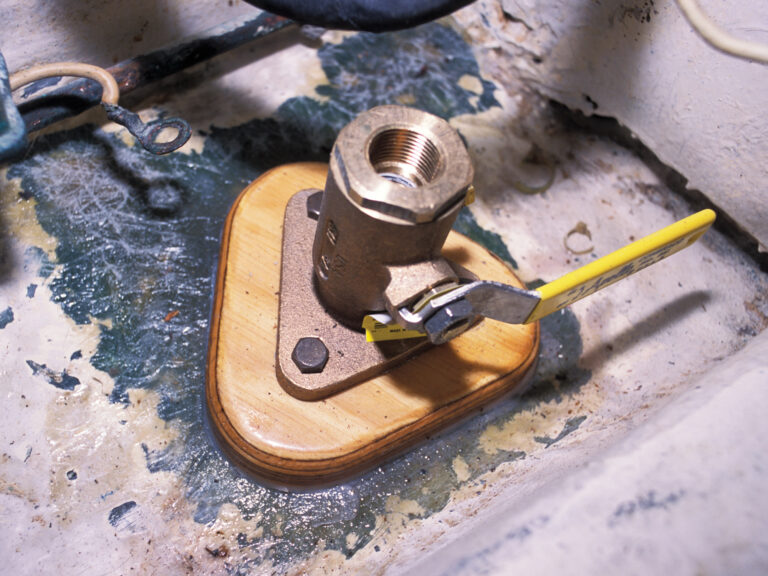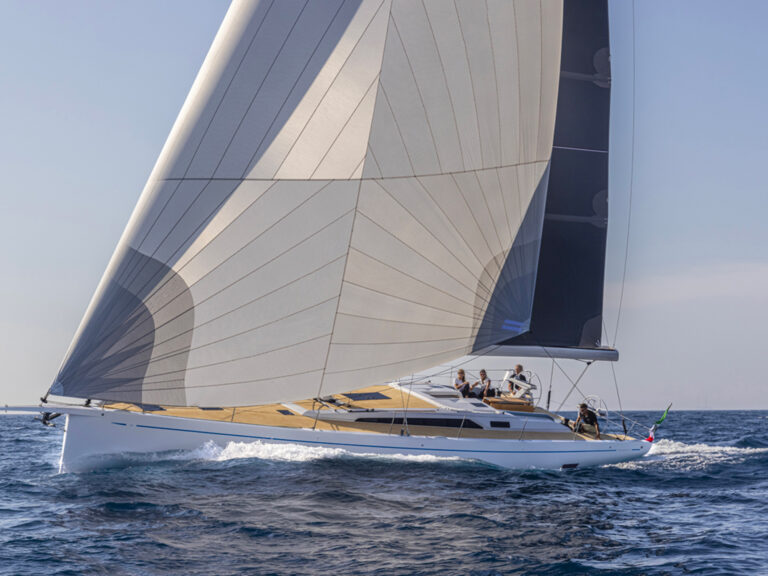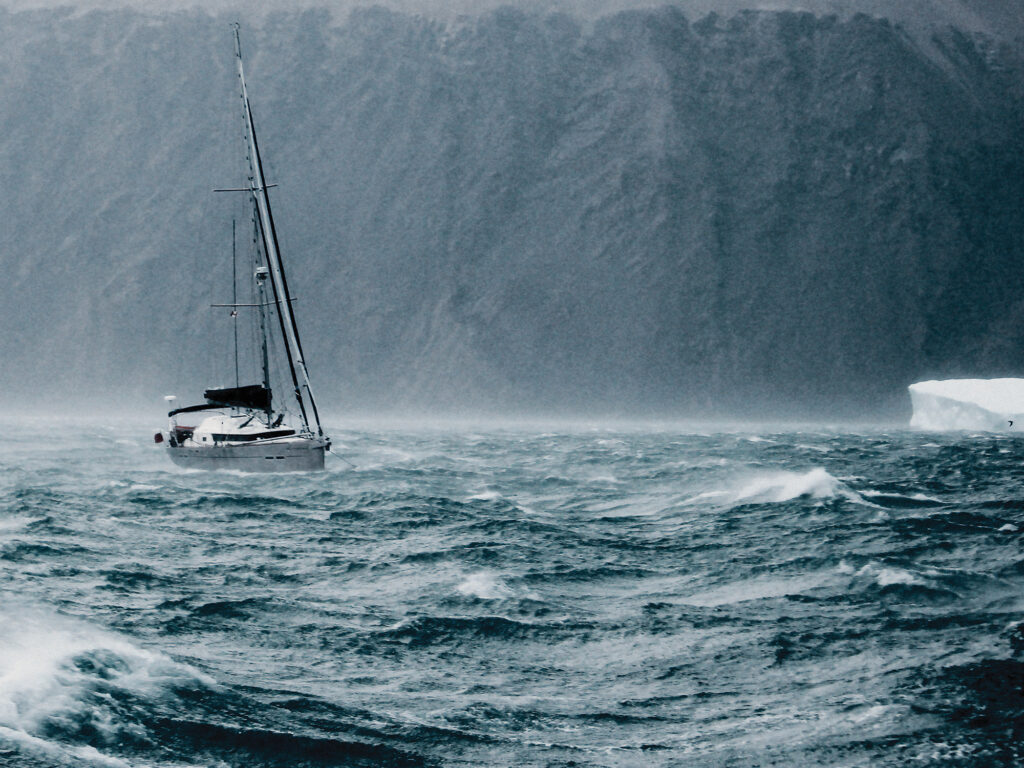
In my long and eventful sailing life, I have been in several emergency situations. In every case, I was able to deal with them. Fitting out the first Aventura myself taught me the importance of being self-sufficient, and ever since then, I have attempted to do all that is necessary to be prepared for the worst. One golden rule that I have learned is not to panic. Calm is crucial in an emergency situation. Take time to assess the situation, draw up a plan of action, and then act. As Mike Johnson, a former fighter-jet pilot and mountaineer, told me: “We use a simple acronym for most of our decision-making: DODAR.
Diagnose the problem, options available, decide on the most appropriate, act upon it, review how it is working. If necessary, return to Step 1. This might sound simplistic, but we have seen so many minor situations develop into disasters because people didn’t even begin at the first step.”
My first serious emergency happened while sailing from Puerto Rico to the Bahamas. We stopped at Grand Turk Island and decided to explore the nearby Ambergris Cay on the edge of the Caicos Banks. As we moved from the deep channel into the shallows, I could see an unobstructed way ahead, leading to an area of darker blue water.
Then, a passing cloud obscured the sun, and the water ahead of us turned to quicksilver. I slowed down but came to a crunching halt on top of a massive coral head. Even with the engine on full power ahead, and then astern, we didn’t budge.
– UPGRADE YOUR RADIO –
Safety Tip Provided by the U.S. Coast Guard
Digital Select Calling (DSC) allows you to transmit your precise location with the press of a button. Make sure your VHF radio has it, and don’t forget to get your MMSI number. It might just save your life.
I donned my mask. Aventura’s keel was jammed in a deep coral cleft—amid some beautiful underwater scenery. I had dived in many attractive places, but this was beyond imagination. Fishes of all colors, shapes and sizes darted amid swaying coral fans. Spiny lobsters swept their antennae from their hidey-holes, while a Napoleon wrasse with thick lips glanced at me with a bored look. I had to grip the edge of the coral head to avoid being swept away by the strong current that had pushed us off course.
Back on board, I got a spare anchor, tied it to a halyard, and swam it some distance away in the hope of heeling Aventura over, to reduce draft and get out of the trap. It was to no avail. The keel was firmly gripped in the coral vice. A couple of hours later, a rising tide and a fortuitous swell lifted us up and into the sheltered waters behind the reef.
Despite the battering, the strong fiberglass hull had suffered only a few scratches, but my self-confidence was severely dented. It took us all a long time to recover from that frightening experience.
Caught in the Net
Another incident occurred near the end of a passage from the Azores to Gibraltar. We had reasonable weather. As we passed Cape St. Vincent aboard Aventura II, I decided to have a short rest ahead of arrival—always a good idea before landfall after a long passage, to help clear the mind. Before going below, I told my two crew to call me if they saw anything of concern.
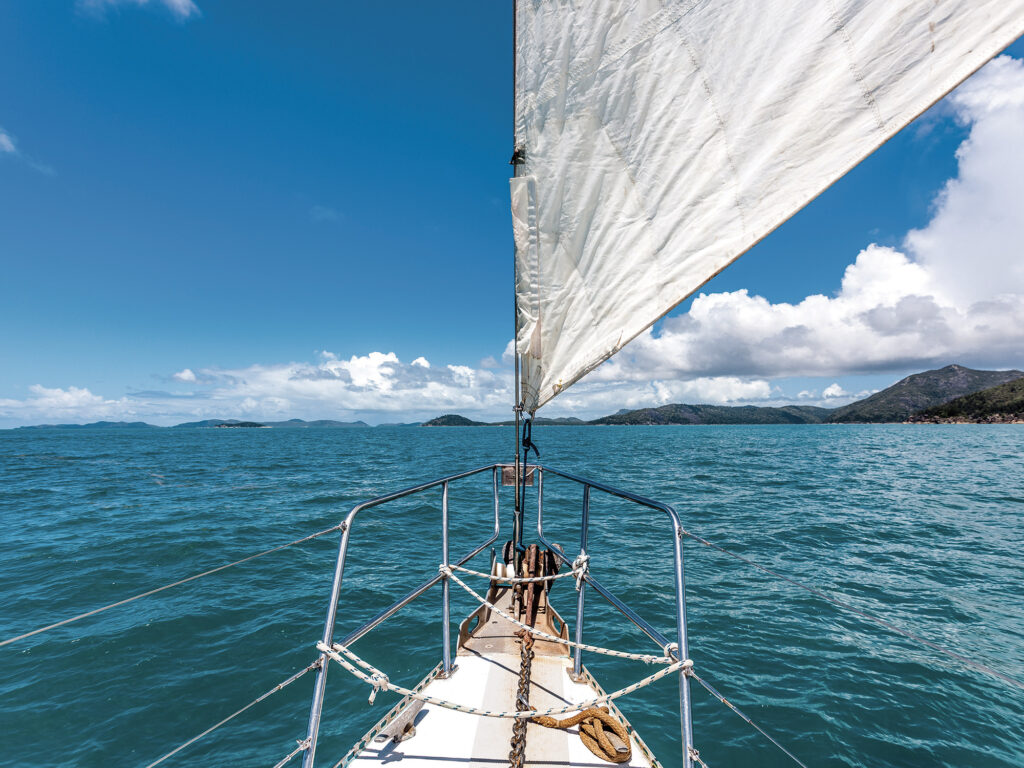
I was awakened by a loud knock, followed by a grinding noise. I jumped into the cockpit and grabbed a flashing light. I knew immediately that we had run into one of those gigantic tuna nets that Spanish fishermen set in that area. Over the side, I could see a thick cable with a heavy net hanging from it.
Quickly, I raised the retractable keel to prevent entanglement. I also prepared my powerful cable cutters. I then called the nearest shore station to explain our predicament. I said that if help was not forthcoming, I would cut the cable.
“Don’t do that! Please, don’t do that!” a voice screamed in Spanish. “Wait. We are coming immediately.”
Soon afterward, a fishing boat raced toward us at full speed. The helmsman signaled us to follow him. He positioned his own keel over the cable to lower it. With Aventura’s keel retracted, we managed to get across both the cable and net. The boat guided us to a gate in the net a couple of miles away, and we were free.
What had saved us was the best tool in my kit: my ability to speak Spanish.
My crew had broken one of my most important rules: to inform the skipper immediately if they saw anything suspicious. They told me later that they had seen the flashing light, but because it was faint, they had estimated it to be much farther away.
Hiss, Rumble, Crack
While on passage from Reunion to South Africa with a Finnish friend, we encountered bad weather off the southern tip of Madagascar. During my night watch, with the wind steady at 35 knots and our speed never going below 9 knots, the pattern of the waves changed. The swell started to look menacing. I had seen higher waves in the Southern Ocean while returning from Antarctica to Cape Horn, but I was not expecting to see anything as bad in these waters.
Earlier that evening, there had been a warning on Inmarsat C that a ship had seen several large logs afloat. The threat of colliding with one of them was at the back of my mind as I savored the thrill of seeing 12.5 knots on the speedometer.
While surfing down a big wave, above the hiss and rumble, I heard a loud noise. The boat pulled out of its slide, and a louder noise came from the direction of the steering. Almost instantly, the movement of the boat changed. I suspected the autopilot had gone off. I disengaged it and grabbed the wheel—which felt heavy and unresponsive.
– WEAR A LIFE JACKET –
Safety Tip Provided by the U.S. Coast Guard
Everyone, even strong swimmers, needs to wear a life jacket at all times when on the water. It is extremely difficult to put a life jacket on once you fall into the water.
I lifted the cockpit grating and saw that the 12 mm bolt joining the hydraulic autopilot ram to the rudder quadrant had sheared. The steering also appeared to be faulty, so I hove-to. I lowered the centerboard; it had been raised while we were broad-reaching. As we were sailing under a reefed mainsail and staysail, I hauled in both sheets and turned in to the wind.
Hove-to, with the wheel lashed to windward, Aventura was close-reaching slowly into the large swell. I found a replacement bolt and replaced the broken one, and then brought the boat back on course, still wondering why it was so hard to steer. I reengaged the autopilot.
Only then did it occur to me to check the rudder hydraulics. I tried to pump down the rudder, but it felt dead. If the valve controlling the rudder or centerboard was not left in the open position, and one or the other had hit something, then the resulting pressure would have blown a sacrificial copper disc that opened the hydraulic circuit.
I had spare discs taped to the hydraulic pump in a plastic bag just for this eventuality, so it took me only a couple of minutes to replace the sacrificial disc. Then I realized that we may have hit one of those logs. Whatever it was, the boat had ridden over it, and it had hit the rudder.
The rudder had two parts. The upper part was fixed, and the lower part could swing up for beaching the boat. Thanks to its design, the rudder had absorbed the shock without suffering any apparent damage. One year later, when the boat was hauled out, I noticed a suspicious crack in the main rudder body. It could have been a consequence, but it must have been a violent collision to crack the massive aluminum plate.
An Alarm and a Hole
Another time, in Croatia, my wife, Gwenda, and I had been joined by our daughter Doina and her children, Nera and Dan, for a summer cruise. We were motoring down the Krka River after visiting the spectacular waterfalls.
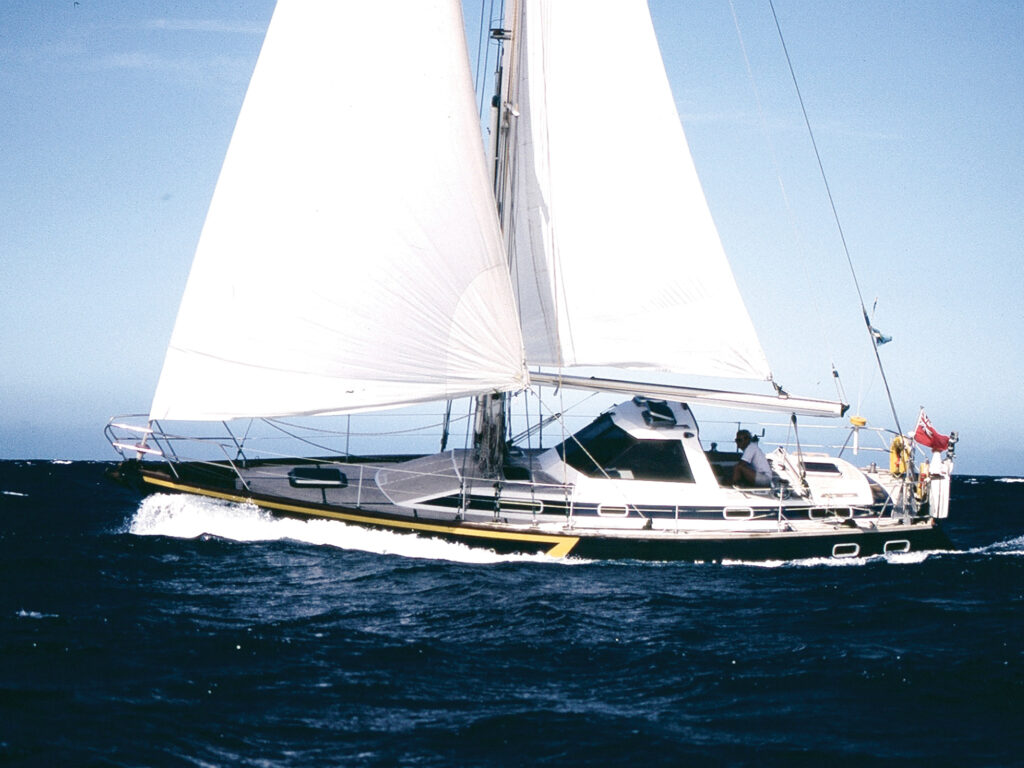
The engine-temperature alarm sounded. I switched off the engine, which had overheated. Being on a river, I suspected that we had picked up some weeds or debris, but when I checked the seawater trap, I noticed a lot of water in the engine bilge.
I dropped the anchor right there in the middle of the river, in the way of numerous excursion boats. When I lifted the floorboards in the aft cabin to look at the back of the engine, I smelled exhaust fumes. The plastic manifold heat exchanger had a large hole in its side. Exhaust and cooling water had escaped.
Gwenda tried to notify passing excursion boats that we had not anchored there for afternoon tea. I got a tube of underwater epoxy, rolled and mixed the two components, and covered the hole. We waited one hour for it to set, and then turned the key. The engine started and ran happily.
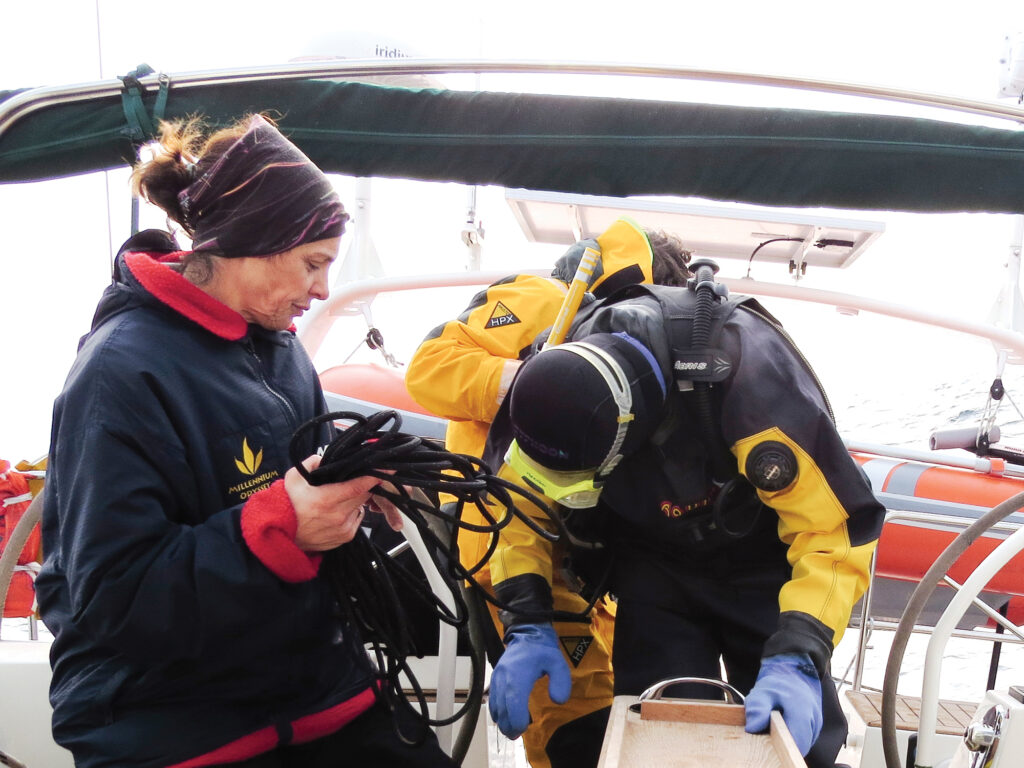
It was a minor problem, but it could have had serious consequences. Doina, Nera and Dan slept in the aft cabin. If this problem had happened at night, they could have been overcome by carbon monoxide. The thought still makes me shudder.
A Dangerous Tangle
After weather forced us to abandon an attempt of transiting the Northwest Passage, we turned to sail back to Greenland. Gale-force winds were forecast for the following day, so we motored fast through Lancaster Sound toward the open sea.
During Doina’s watch, I was awakened by a loud noise from the engine. I rushed into the cockpit and stopped the engine, which was rattling. It sounded like we had picked up something on the propeller.
I strapped a GoPro camera with an underwater housing to the end of an ice pole, lowered it over the side, and managed to get a good view of the propeller. A thick, black rope was wound around it, with its end trailing behind. Even worse, the bolts between the propeller shaft and transmission had sheared.
The rope had been strong enough to immobilize the propeller shaft and rip it off its mounts. With much drifting ice, as well as large icebergs still about, we needed to be able to use the engine. We had 1,000 miles to go to Nuuk.
With the imminent gale, we reefed down and continued sailing until we had consistent winds of more than 35 knots. We hove-to with three reefs in the mainsail and most of the staysail rolled in, and we easily rode out the gale. After a dozen hours, the wind started going down and I could work on the engine.
I had no spare bolts on board, but I found some longer bolts and cut them down to size with the electric angle grinder. I retrieved the sheared-off bolts from the bilge and recuperated their nuts. Hanging upside down over the back of the engine, I managed to pull back the propeller shaft sufficiently to reconnect it to the transmission.
It was now time to deal with the rope itself. I could turn the propeller shaft by hand, and it felt as if it were free, but I dared not start the engine and put it in gear. I donned my drysuit and kitted myself out for the ice-cold water. I figured that the job would take only a few minutes, so I didn’t wear an air tank.
Attached to the boat with a safety line, I cut off some of the rope and freed the propeller. Then I summoned superhuman strength to get out of the water while wearing lead weights, with the boat bouncing violently in the rough swell. My hood was not dry, and I could feel the cold water getting to my head. I knew that I had only about one minute before serious hypothermia would set in.
– CARRY A BEACON –
Safety Tip Provided by the U.S. Coast Guard
Satellite beacons such as EPIRBs or PLBs allow boaters to transmit distress signals and their exact coordinates from anywhere on the planet, no cell service required. It may be the best $400 you ever spend.
It was the sight of Doina standing helplessly above me that gave me the strength to lie on my back and lift my feet one by one out of the water. She reached down and pulled off my fins. I then managed to put my foot on the lowest rung of the boarding ladder, and she helped me onto the stern platform. I dropped, exhausted, into the cockpit, and Doina later told me that I sounded incoherent.
When I had recovered, I started the engine and put it in forward gear, but I kept it at slow revs. I checked the propeller with the underwater camera and could see it turning freely, with the end of the rope trailing harmlessly behind. After half an hour of motoring, I checked the bolts, and they were tight.
Eight days later, we were in Nuuk, where I donned my drysuit—this time with an air tank—in the calm water. Some of the line was waving idly in the current. I cut it off with a serrated knife, but the rest had fused to the propeller shaft. That job had to wait until Aventura could be hauled out at a boatyard in Newport, Rhode Island, some 3,500 miles from where the incident had happened.
Nasty Weather
In all my years of sailing, I have experienced sustained winds over 50 knots on only a half-dozen occasions. I always left the tropics to avoid the hurricane and cyclone seasons, but I took a calculated risk in high latitudes, where we were prepared for the heavy weather we encountered. Even in these days of climate change, extreme conditions are still rare during the safe seasons on the commonly traveled cruising routes.
My first experience of bad weather happened on the first Aventura, while anchored in Bora Bora Lagoon with another dozen yachts. In the middle of the night, a passing depression reversed the prevailing southeast winds into a strong west wind that put us all on a lee shore.
Panic and havoc were all around us. The only way out was to pick up the anchor and move to a more sheltered place. I started the engine and powered ahead.
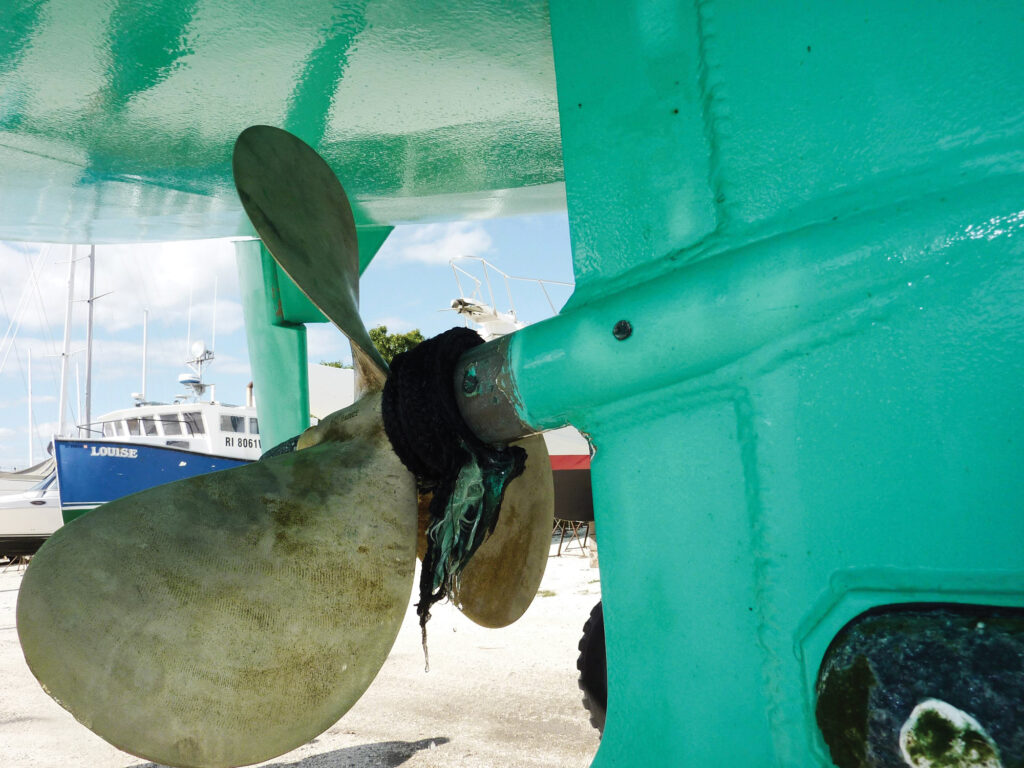
It was impossible to raise the dug-in anchor, so we dragged it slowly until we reached a derelict dock in the next bay. We survived the rest of the night and returned to the anchorage in the morning. Several boats had been blown onshore and were damaged. At least one was a total loss.
We were the only boat to have left the anchorage. It was an extremely valuable lesson. From then on, whenever I had any doubts about an anchorage, at the first sign of a change in weather, I would pick up the anchor and go into the open sea. The one place where I didn’t do that was in Arctic Canada, in Dundas Harbour with a half-dozen other boats. We were caught by a violent storm that peaked at more than 60 knots, but fortunately, we were well-anchored and survived the 28-hour ordeal.
Onward
Having been a monohull owner for more than 40 years, I had doubts about the vulnerability of my catamaran Aventura Zero in heavy weather. I did take that factor into account when I ordered the Outremer 45, and, to put my mind at rest, I was sincerely hoping that we would encounter some bad weather on our maiden voyage.
My weird wish came true not once, but three times, with winds of 40 knots and gusts of 50 knots. It happened on the return passage from Tenerife, Spain, to France while passing Ibiza in the Balearic Isles. It was a proper Mediterranean winter storm, with winds in the high 30s and a swell to match.
Everything was going well, although we were sailing too fast for my taste. We put the third reef in the mainsail and rolled in the Solent to one-third of its surface. When the winds started hitting the 40s, we dropped the mainsail completely.
We continued broad-reaching. To my utter amazement, but also relief, Aventura was as stable as a table. This is the description I put in my logbook: “The boat was taking the high swell in its stride, surfing at 12 to 14 knots, peaking once at 18.4 knots.”
Even at that speed, there was no sign of a lack of stability. On the contrary, I went out on several occasions and was amazed by the enormous wake streaking out behind us.
It was an exhilarating experience, and my doubts were definitely put to rest. Other catamarans may have behaved differently, but I can vouch for the seaworthiness of my latest Aventura.

